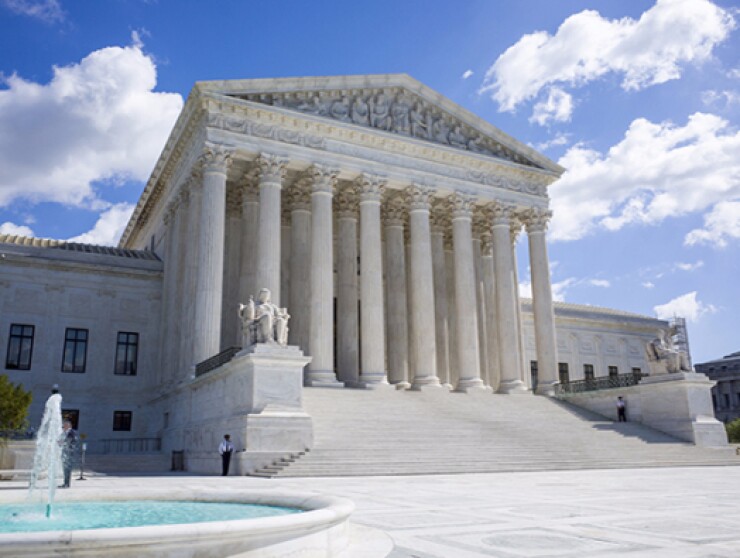The National Credit Union Administration filed a brief Tuesday opposing a petition from the American Bankers Association that
ABA is attempting to overturn an

The case’s origins stretch back to December 2016, when
ABA is arguing the Court of Appeals strayed too far from the common understanding of the “well-defined local community” required by the Federal Credit Union Act by sanctioning fields of memberships encompassing as many as 2.5 million people. ABA also objected to the court granting its imprimatur to rural districts with up to 1 million residents.
In
“The court…recognized that, in adopting the revised definition, the agency had reasonably sought to promote the statutory goals that community credit union members share common bonds, and that federal credit unions have a sufficient membership base to operate effectively,” Solicitor General Noel J. Francisco wrote.
According to Supreme Court procedure, ABA now has about 10 days to file a brief rebutting the arguments NCUA put forward in its brief in opposition to the writ of certiorari. If four justices agree to hear it, the case can then be put on the court’s calendar.
The case was originally heard in the U.S. District Court for the District of Columbia, where Judge Dabney Friedrich issued a decision in
At the same time, Friedrich upheld portions of the rule that allowed credit unions to serve core-based statistical areas without including the urban core that defines the area, and the ability to add adjacent areas to existing well-defined local communities on a case-by-case basis.
NCUA appealed Judge Friedrich’s ruling in May 2018. ABA filed a crossappeal challenging Friedrich’s conclusions in favor of the agency in June.
The Court of Appeals essentially reversed the portions of Friedrich’s ruling that overturned provisions of the field-of-membership rule, while leaving the supportive portions intact.
If the Supreme Court does elect to consider the case, it would not take up the matter until at least October, when its next session begins. Three current members of the court – Justices Clarence Thomas, Ruth Bader Ginsberg and Stephen Bryer – were seated in 1998 when credit unions lost the case that eventually led to the passage of the Credit Union Membership Access Act. In that matter, a 5-4 ruling in favor of the banks, Justices Thomas and Ginsberg sided with the ABA, while Bryer sided with credit unions.





